
Aref Karimi for Insider
- As the US exits Afghanistan after 20 years, it is leaving behind a flourishing, violent trade in heroin and, increasingly, crystal meth.
- The Om weed, which contains the key ingredient for making meth, grows wild in Afghanistan's mountains.
- One in five Afghans are either involved in the drug trade, or addicted to drugs.
- See more stories on Insider's business page.
Herat – For weeks, Afghan police had been staking out a single-family house they believed was being used as a meth lab.
When it came time for the raid, though, they were caught off guard when a middle-aged woman answered the door. In accordance with local custom, a female officer stepped forward. But before anyone knew what had happened, the woman had struck the female officer and bolted the door behind her.
By the time police managed to knock down the door, only fizzled remnants of meth and heroin were left in the kitchen and bathroom, while a rank odor wafted in the air.
"In the time it took us to enter the house, she had destroyed the hard drugs," one of the officers told Insider. "We would never be able to prove that the house was being used for cooking meth or making heroin."
Twenty years after the U.S. invasion of Afghanistan, U.S. troops are preparing to leave the country for good. The announcement has prompted sky-is-falling predictions of a coming Civil War by some US and Afghan politicians and pundits.
But it's not just the prospect of a resurgent Taliban that has people on edge.
Once the Afghan National Security Forces assume sole responsibility for security on Sept. 12, they will also be faced with managing the country's flourishing, and increasingly violent, drug trade.
Crystal meth, in particular, is suddenly everywhere in Afghanistan - fueled by the discovery that Om, a weed that grows wild in the mountains, is an excellent source of ephedrine and pseudoephedrine, the drug's key ingredient.
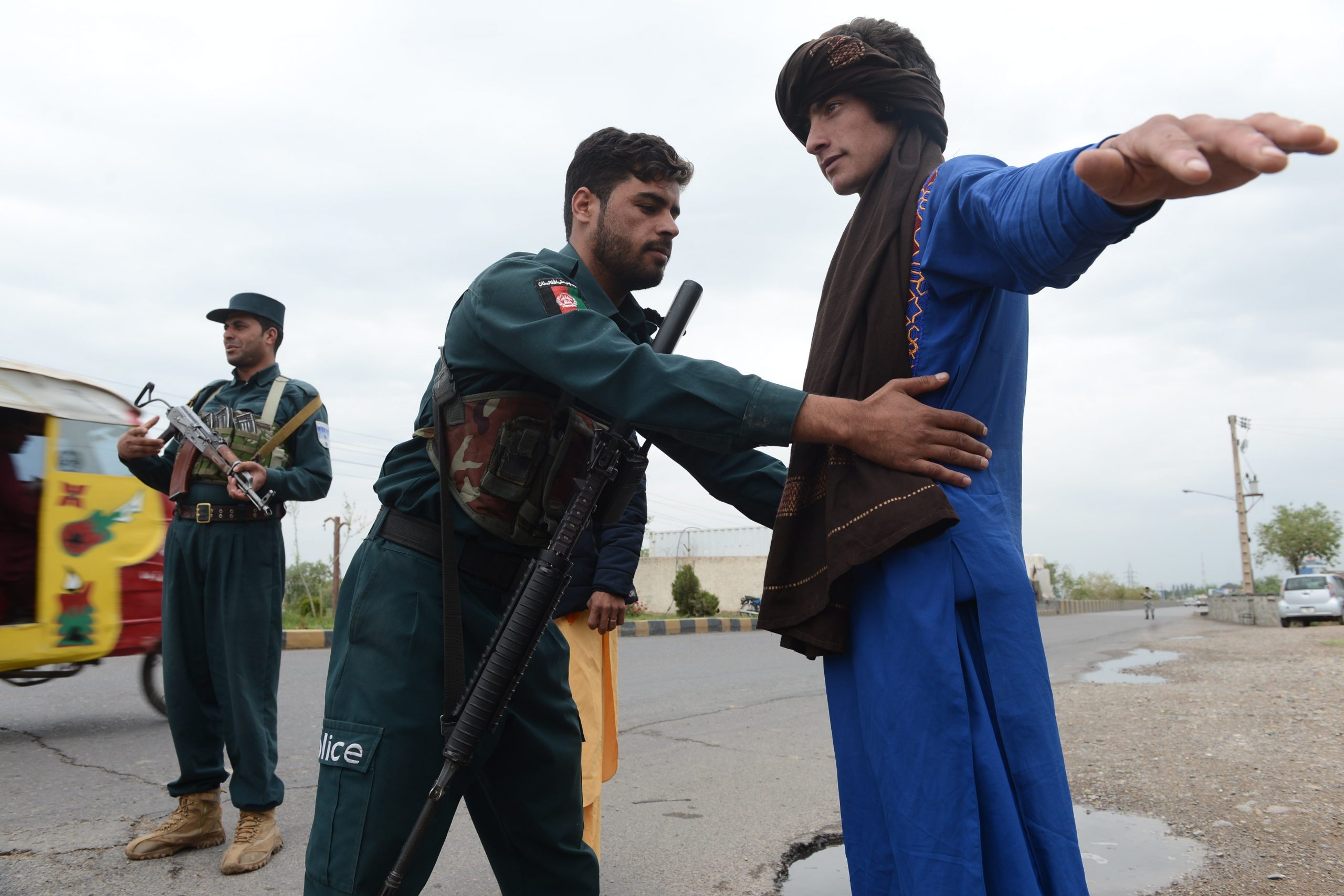
Aref Karimi for Insider
Production often happens in people's homes, employing entire families, and police say few seem aware of basic safety protocols to prevent living areas from being contaminated with toxic residue. Residents in Ghorian district, a few hours drive from the Iran border in Herat province, say they have heard of people's kitchens exploding.
Afghanistan's drug trade generates an estimated $35 million a month for the Taliban and drug gangs. Meanwhile, one in five Afghans are either involved in the drug trade or are addicts. As for the US, which has poured $8.62 billion into anti-narcotics efforts since 2002, there are currently no plans to fund those efforts going forward.
Meth now rivals heroin as Afghanistan's most lucrative, illicit export. What isn't sent abroad, mostly via Iran, is consumed locally, contributing to an epidemic of addiction fed by decades of war, displacement and poverty.
A MYSTERIOUS GRASS
In 2017, rumors started circulating in western Afghanistan that a mysterious form of grass had been found to contain the key ingredient in crystal meth.
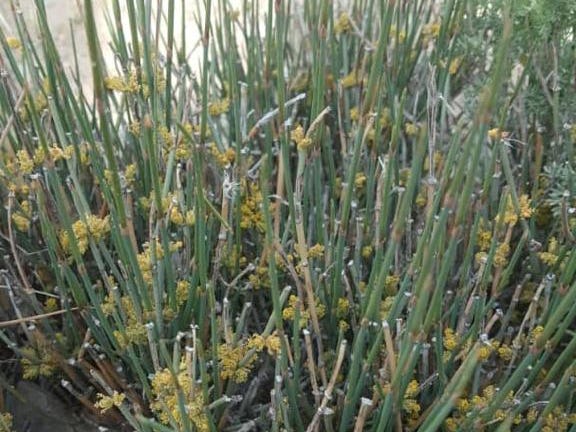
Afghan Ministry of the Interior
Initially, locals largely dismissed the "men and women rushing to the fields at night with their flashlights in hand to scour the hillsides," as one resident put it.
Within a year, though, cartels based in Iran-Afghanistan's wealthier and better developed neighbor, which already had a booming meth trade-had people regularly crossing into Afghanistan to train locals in how to spot the plant in the wild and use it to produce a cheap, but potent, methamphetamine.
The "grass" turned out to be a weed - Ephedra Sinica, known locally as Om - that flourishes in mountainous areas. According to the European Monitoring Centre for Drugs and Drug Addiction, ideal growing conditions cover 192,000 square miles in Afghanistan - about a third of the country.
Unlike opium, which requires months of care, Ephedra Sinica grows free and requires just low-skilled, low-paid laborers capable of picking bushes.
As Om flourishes in high-altitude areas, so too has meth production. Much of it is smuggled into Iran, and then onto Turkey and Europe for sale.
What's more, according to David Mansfield, an author and researcher who has been tracking the trade, there's growing evidence that meth coming from Afghanistan is of comparable quality to what's produced in Southeast Asia, Europe and Mexico.
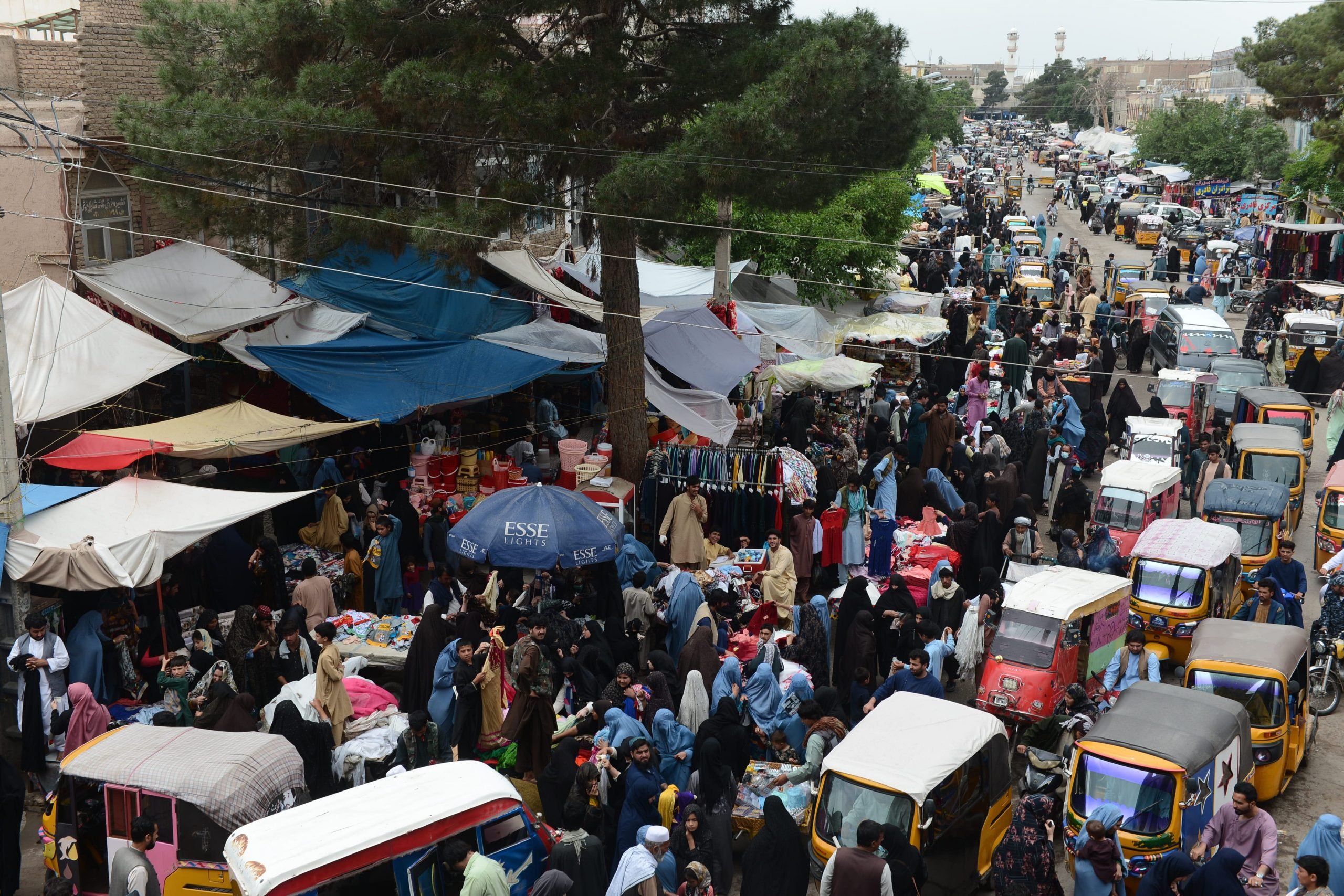
Aref Karimi for Insider
Anti-narcotics police in the province said that drug mafias operate in far-off, remote areas beyond the government's reach and in territories under the direct control of the Taliban for cover. The Taliban will personally escort traffickers across district and provincial borders to insure they do not come under attack.
For this protection, the group collects taxes on several stages of the production process, earning them anywhere from $100 to $400 million a year, police sources say.
All this has led to a cross-border cat-and-mouse game between the nation's 2,850 anti-narcotics police and drug mafias that have allied with local strongmen, crooked cops, corrupt officials, the Taliban and regional drug mafias.
"So long as this war continues, the drug trade will continue to grow bigger and bigger. Eventually, it will swallow us whole," one anti--narcotics officer said.
IRAN'S BUDGET METH LAB
Back in 2007, the United States and Western Europe placed strict limits on the sale of Sudafed and other over-the-counter sources of pseudoephedrine, forcing producers to look elsewhere to feed the growing demand.
Iran's first meth lab was discovered in 2008. By 2012, Iran had become the fourth largest exporter of pseudoephedrine.
Iranian drug traffickers have long turned to Afghan mafias to produce and export heroin, taking advantage of Afghanistan's 167 unofficial - and largely unmonitored - international border crossings.
And so, once Afghanistan was found to have an almost limitless supply of Ephedra, there was already an infrastructure in place to smuggle it out. Making it all easier, Afghan authorities were seen as overstretched, with less training than their Iranian counterparts.
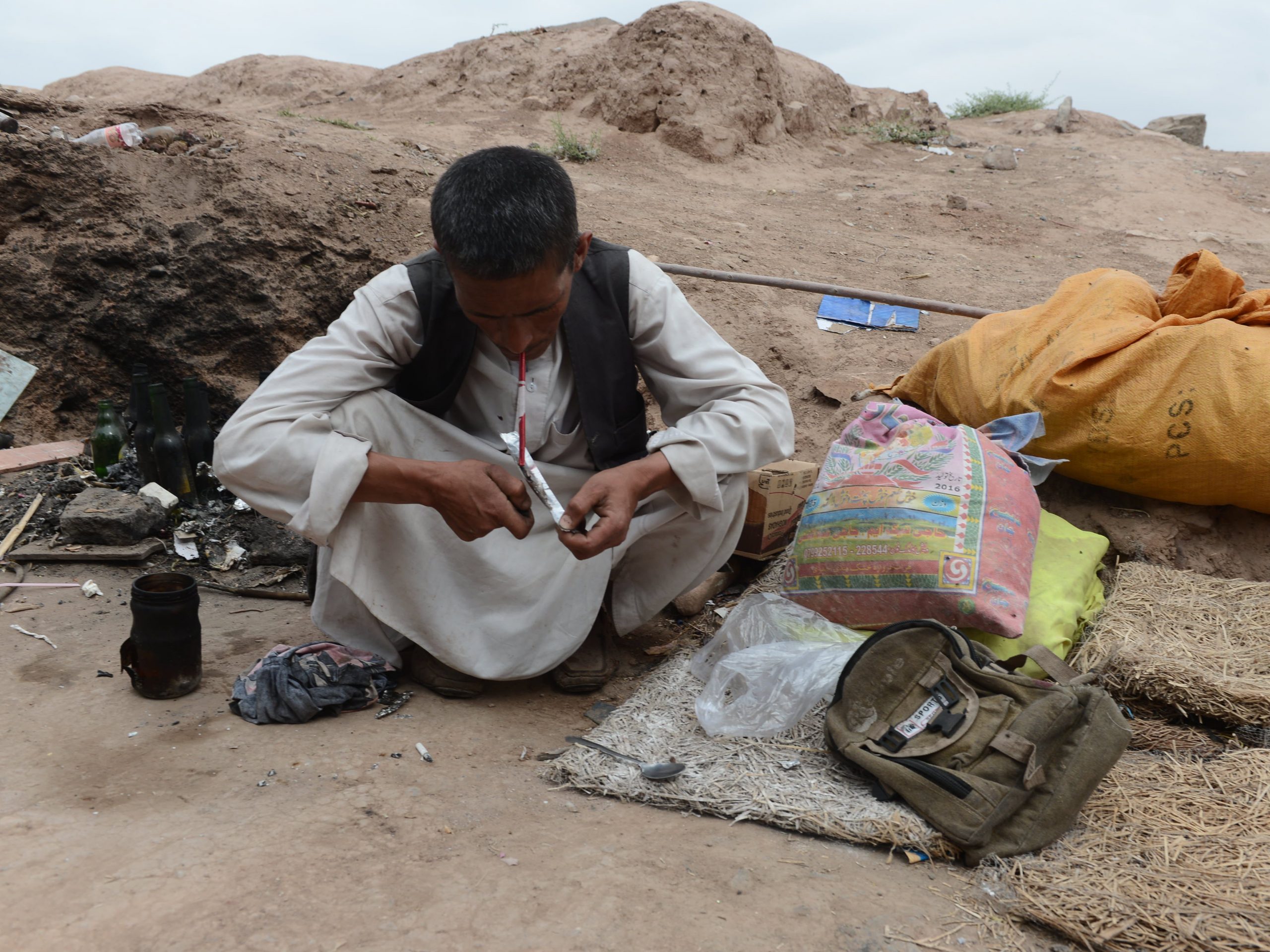
Aref Karimi for Insider
It's not just the gangs. For years, Tehran has been accused of double dealing in Afghanistan. Iran publicly supports the Kabul government, while repeatedly being accused of aiding and abetting the Taliban - a primary beneficiary of Afghanistan's drug trade. Meanwhile, Afghan nationals are routinely detained, and even put to death, on dubious drug smuggling charges in Iran.
Shakib Ahmad, a 40-year-old car parts seller from the Eastern province of Nangarhar, was among the many Afghans who traveled to Tehran looking for work.
He first arrived in 2007, and ended up living there for more than 13 years - though most of that time was spent in an Iranian jail. He was eventually transferred to Herat Central Prison, which is where I interviewed him.
Like millions of other Afghans, Ahmad started out doing back-breaking, low-paid work on construction sites in the Iranian capital, enduring mistreatment, racism and abuse.
When he lost his job, a friend helped connect him to a crew of meth producers. He never sampled the final product, he said, but the chemical fumes wafting out of the giant pots took a toll on his health. Other inmates shared similar stories.
For the first five months, he was only allowed to observe in the houses and shops that were turned into meth labs. He watched Iranian women stirring the large pots and blending the ingredients using simple household supplies and flimsy glass beakers.
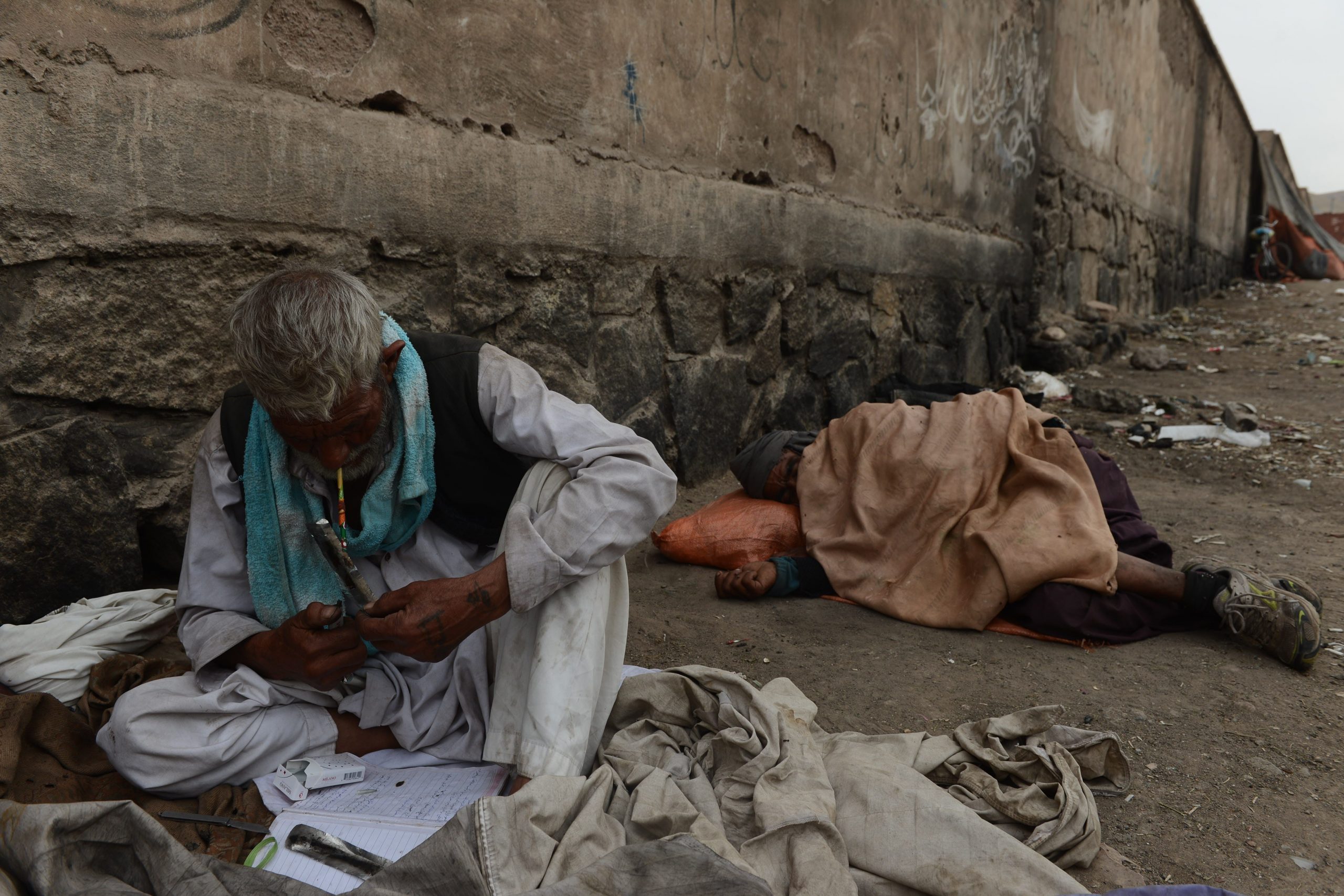
Aref Karimi for Insider
Eventually, Ahmad earned the trust of his Iranian bosses and became a master cook. Slowly he started to notice more and more Afghans working around him.
"At the time, for every 100 Iranians there were at least five Afghans in each lab," he said, adding that in recent years that number has ballooned.
He started to hear of Iranians, including some of his fellow inmates, traveling to Herat, Farah, Nimroz, Helmand and Kandahar.
"They would go in rounds, staying a few weeks or months at a time, 30 or 40 of them. Each of those would train 20 Afghans. And then it just exploded," he said.
"I, WHO AM AN ADDICT"
While meth production appears to be surging across Afghanistan, nowhere is it more apparent than in Herat, Afghanistan's fourth largest city. What isn't exported is sold locally.
In the daylight hours, addicts cluster together on the dirt walkways only a couple of kilometers from the city's famous minarets. Built in the 1400s by Queen Gowharshad, who envisioned Herat as a center for Islamic learning, the minarets were meant to guide students from as far away as Syria to study in this ancient city.
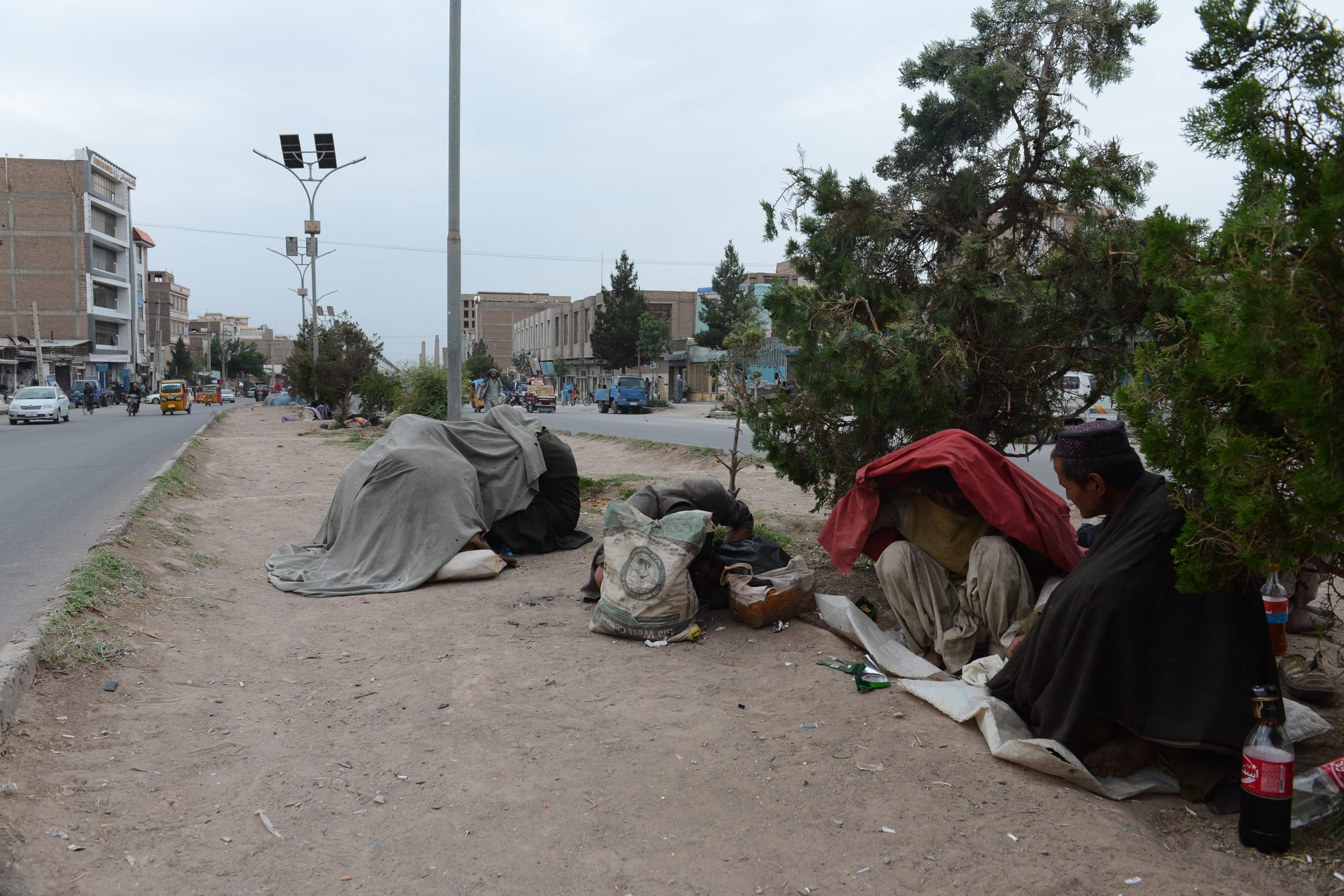
Aref Karimi for Insider
These days, addicts gather in the shadows of those minarets, collecting trash and lighting up.
There are believed to be as many as 80,000 addicts in this ancient city, and dozens of treatment centers have opened up around the province. The vast majority of their patients are using meth, either in conjunction with other drugs or as their sole drug of choice.
The Sedaqat Treatment Center is one such facility. The four-floor building towers over the fields and mud houses around it, and sits along a nondescript dirt road in a corner of Injil district, about 20 minutes outside of Herat city.
The center has treated thousands of addicts using a combination of traditional Narcotics Anonymous practices, vocational training, and music therapy.
"Music calms you, it takes your mind off the next high," said Abdul Zaher Attaie, himself a former addict, who first opened the center nine years ago.
Ehsanullah, one of the addicts being treated at the Sedaqat Center, said he first tried crystal meth because he was assured it would help him kick his addiction to heroin.
"We were told it won't make you tired, you don't have to smoke a lot to get high and that it's not addictive," he said. "It was sold to us as some kind of tonic. We had no idea about all of the adverse effects, we used it happily."
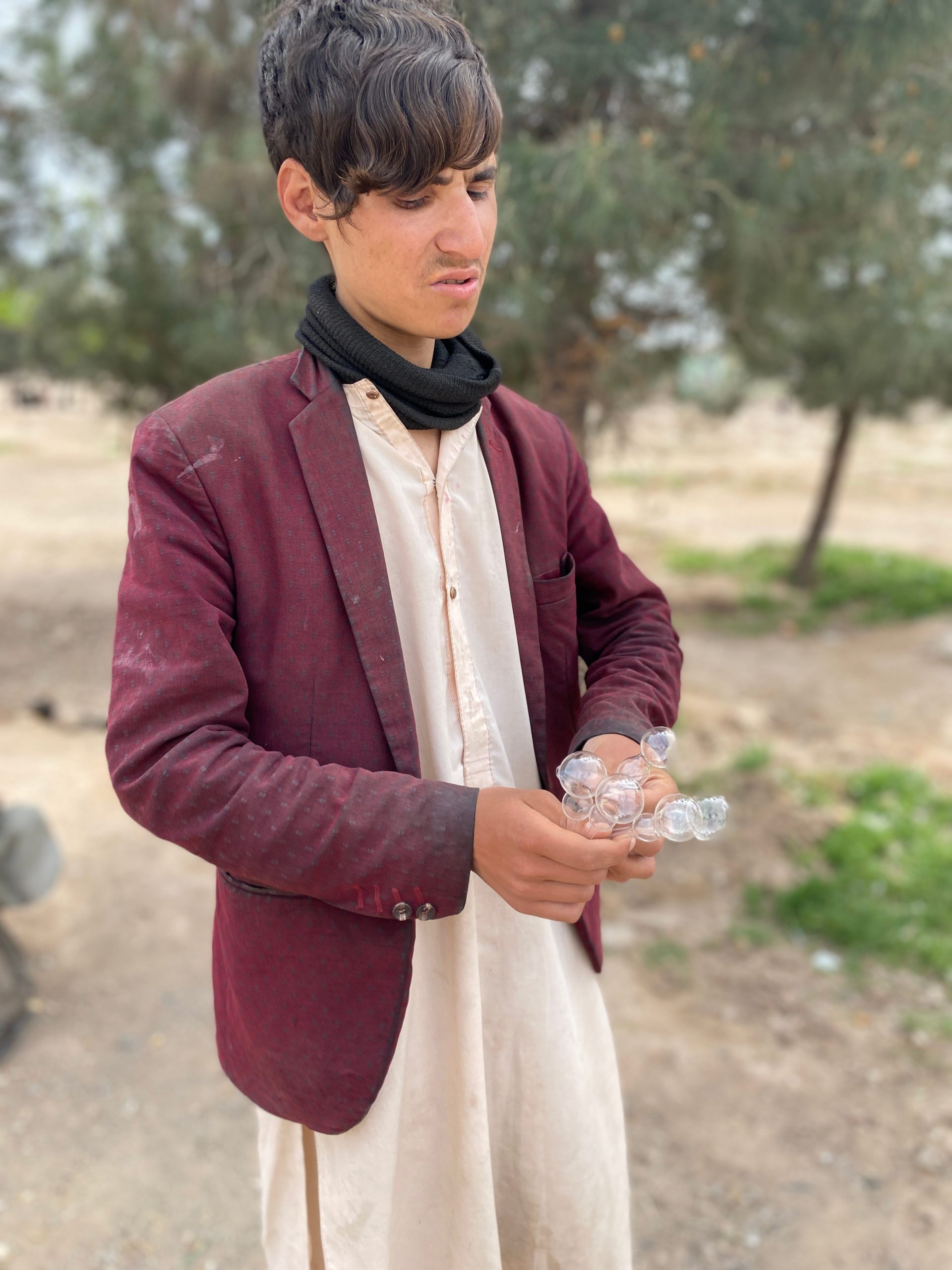
Ali Latifi for Insider
He knows that once he leaves this center he will be surrounded by temptation everywhere he turns in an ancient city of learning and art that has now become a haven for drug production and consumption.
For now, though, he's an enthusiastic participant in the center's music therapy program, where he composes songs and sings alongside 60 others.
As one song goes: "The corners of disrepair is my place, I, who am an addict, my lost friends directed me, the work of my youth was addiction, I, who am an addict."
THE GRAVEYARD
Just behind one of Herat's ancient Jewish cemeteries is a newer graveyard where dozens of addicts spend their days in squalor.
The disheveled men - teenagers and former jihadi fighters in their 50s and 60s among them - cover their bodies with soiled shawls, weathered from hours under the harsh Herat sun.
As the heat blares down on this barren swath of land, devoid of greenery and shade-giving trees, the men-and sometimes women-sit smoking crystal meth and heroin from cheap, flimsy plastic pipes sold for 10 Afghanis (around $.13) a piece.
Most days, Omar, a seven-year old boy, comes to this spot to sell them boiled eggs. "I come here every day to provide food for my family," he tells me. If he can sell 10 eggs that earns him enough to buy bread and rice.
Another regular visitor is Noorullah, a 20-something who works at the Sedaqat Treatment Center. A recovered addict himself, he has built an easy rapport with these men, even if he usually fails in his efforts to entice one or two of them into treatment.
He stops to say hello to a middle-aged addict he recognizes from his home district of Karokh, east of Herat. Others say they have come from Shindand, one of Herat's most insecure districts that itself has become a center for meth production, and that they plan to make the journey back that evening. They are likely to face Taliban checkpoints and IEDs along the way.

Ali Latifi for Insider
"What are you all doing here, whiling away your days, come with me to the camp and get clean. The car is ready," he says.
"I've kicked the habit," says one young man. His still-crisp, colorful harem pants and tunic - called piran tombans - sets him apart from the others in their fading rags.
Noorullah isn't buying it. "What would you be doing here if you're clean? Why would you want to be around the squalor and dismay?"
Noorullah, having worked with addicts over the last few months, knows the toll this life has taken on the men in the cemetery. "They look old, but a lot of them are actually very young," he says. "It's the drugs that make them look so sickly and disheveled."
"This is another tragedy of life in Herat, these men are here because no one has done anything for them."